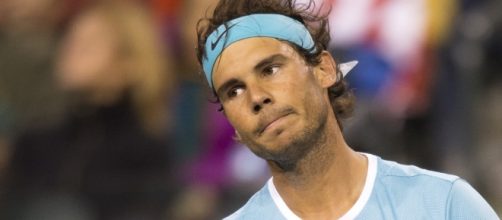It may come as no surprise that Nadal’s 2016 campaign fell victim to his biggest rival over the last 8 years – injury. Recurring injuries have manifested themselves as a cruel, fickle and ever-present obstacle to the Spanish legend's bid to reach the pinnacle of the sport.
Of course, his place in the annals of tennis history is well and truly secured, but the buckling knees, crippled back and now ailing wrist have many questioning - what next?
Isolating the problem:
The world number 5 will miss the rest of the season, including the Barclays ATP World Tour Finals for a 3rd time.
With no competitive tennis on the horizon until Abu Dhabi at the start of next year, Rafa has plenty of time to assess the situation in advance of 2017. No doubt he will dedicate much of his newfound availability to the pursuit of regaining the full potential of his famed lefty forehand. The Manacor-native has stated in various interviews that he believes it is his lack ability to ‘create pain’ for his opponents with this shot that has been the main reason for his declining standard of results over the last two years.
Alternatively, some experts have stated that it is Nadal’s refusal to part with his lifelong coach, Uncle Toni, that has led to a predictability in his game. Both Roger Federer and Novak Djokovic have changed coaches many times over the years to add new weaponry to their respective tennis arsenals, why should Rafa not do the same?
To his credit, the Spainard was playing with a renewed vigorearlier this season.A 13-match winning streak on his preferred European clay that included titles in Monte Carlo and Barcelona had many heralding the return of the King of Clay, however, it was not to be. Once again Nadal’s oldest and greatest foe, injury, intervened. Perhaps it is time for 30-year-old to treat this rival with the same respect he shows to the ones that stand across the net.
What approach to take:
Skipping the home stretch of 2016 exhibited some shrewd thinking from the Nadal camp. Traditionally not his most successful part of the season, Rafa will not be missing anything other than match practice. It could be prudent to carry over this approach into next year: play a warm up hard-court event then the Australian Open, skip the South-American clay and go straight to Indian Wells before missing Miami to preserve enough energy to roll through the European clay court stretch culminating with the French Open.
Missing Wimbledon might also be wise but good luck telling any professional tennis player to do so. Perhaps Toni should consider scheduling his nephew for the entire American hard court swing including the U.S. Open, but skip the end of the season again with the exception of the World Tour Finals should Rafa qualify. Competing in a more streamlined schedule may curtail his chances of ever reclaiming the number 1 spot but at 30 years of age playing at a sufficiently high level long enough to do so, particularly with Nadal’s physical style, was always going to be a daunting challenge. However, playing the next few seasons with the aim of maximizing form and fitness for the French Open could lead to more titles in Paris – after all, Roland Garros is Rafa’s house – anything is possible.
A player who has won the same title 9 times should never be counted out of taking their tally into double digits.
Provided his recovery proceeds smoothly and he can recover the form he displayed earlier this year the Nadal will have every chance for a successful 2017. In a press conference following his loss at in Shanghai earlier this month the former world number 1 said: “I have two and half months to get where I need to be and I’m going to do it”. Coming back from injury and returning to top form is a feat rarely witnessed by the tennis world. To have achieved this twice already in his career is astounding and the Spaniard is clearly as vehement as ever in his belief that he can do it again. As long as Nadal is confident of his return, everyone else should be too.

